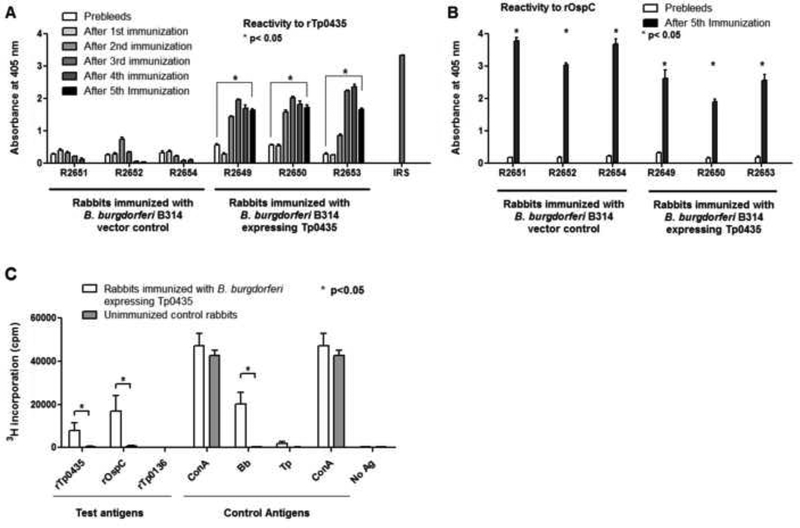Figure 2: Antibody reactivity, and cellular immunity determined by ex-vivo proliferation of T-cells from the immunized rabbits against recombinant Tp0435 and OspC proteins.
(A) Reactivity against recombinant full-length Tp0435 (rTp0435, w/o signal peptide sequence, aa 25–156) was tested with sera obtained from rabbits prior to immunization (Prebleeds) and two weeks after each boost immunized with B. burgdorferi B31HP with vector control (rabbits R2654, R2652, R2651), and from rabbits immunized with B31HP strain expressing Tp0435 (rabbits R2649, R2650, R2653). (B) Reactivity against recombinant OspC (rOspC, aa 19–209) was tested in sera from all rabbits immunized with B. burgdorferi B31HP strains used in this study prior to immunization and two weeks after the 5th (and last) injection. Asterisks (*) indicate whether reactivity values after the 5th immunization are significantly higher (p≤0.05) as compared to the pre-immunization sera. Serum form a rabbit infected long term (>90 days) with the Nichols strain (IRS) was used as a positive control for T. pallidum antigens. (C) T-cell proliferation assay with splenic lymphocytes from rabbits immunized with B. burgdorferi expressing Tp0435 and unimmunized control rabbits using test antigens (rTp0435, rOspC, and rTp0136) and control antigens ConcanavalinA (ConA), sonicated B. burgdorferi (Bb), sonicated T. pallidum (Tp), and No antigen (No Ag). Bars represent the geometric means ± standard error of mean in quadruplicate experimental values for each antigen for three rabbits. Significant differences (p≤0.05) are indicated by an asterisk (*).

